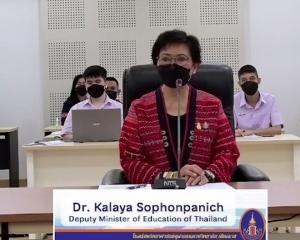The principals of two rural Otago secondary schools are concerned the sale of non-core school houses in their towns could jeopardise the future operations of their schools.
The Ministry of Education began work at the start of 2012 on the more timely disposal of non-core houses in response to the costs imposed on the ministry by the Christchurch earthquakes, strengthening buildings against possible earthquake damage nationally and making buildings weathertight.
Ministry of Education general manager Kim Shannon said there were 68 non-core houses in Otago, which were in areas with adequate residential accommodation. The houses were fully owned and managed by the ministry.
Core houses would not be sold because they are still needed to recruit and retain staff in isolated and hard-to-staff areas.
The move to sell non-core houses has previously been welcomed by some Otago principals, but others are concerned about how it will affect the running of their schools.
Lawrence Area School principal John Auld said his school had five non-core houses and one core house (the principal's house).
"At times, we absolutely need them. It's a bit cyclic.
"At the moment, we have three staff and their families living in three of the houses."
In the past, whenever any of the non-core houses had been unoccupied by staff, they had let the houses to private tenants.
The present population of Lawrence is about 500, and Mr Auld said there was a "modest" amount of rental property. But again, availability was cyclic.
School housing was generally less expensive, which helped to attract staff to the school, he said.
"It would definitely disadvantage us without them."
Blue Mountain College principal Lindy Cavanagh-Monaghan agreed.
She said her school, in Tapanui, was in danger of losing four non-core houses and two flats.
Fortunately, the school still had one core house, but Mrs Cavanagh-Monaghan said this would not be enough.
The housing was an incentive to attract teachers to areas that were "less attractive" to live in, compared with cities.
In a town with a population of about 900, rental space was often hard to find, she said.
"Tapanui can be a hard place to find rental properties. We often get requests from private people wanting to rent our houses, which is indicative of the situation.
"Housing is an incentive. The problem is, you don't know when you're going to need it."
The school could be disadvantaged without the houses, she said.
Last month, principals in Balclutha and Wanaka said they were not concerned by the sale of non-core houses at their schools because they believed the properties were outdated, and there were plenty of other rental properties in the community for staff.
A ministry spokesman said if schools were concerned about the classification of houses, they should contact the Ministry of Education to discuss the issue.
He said a national disposal programme for all non-core housing would begin this month, and boards would be advised when their non-core housing was being considered for disposal.
In line with the need to reinvest the funds into priority areas, non-core housing had been withdrawn from the School Property Incentive Disposal Programme from April 20 this year, which meant schools would not receive any of the proceeds from the sales, he said.
School house sales
• Balclutha School ... 4
• Blue Mountain College ... 6
• Cromwell College ... 4
• Cromwell Primary School ... 1
• Dunstan High School ... 6
• Lawrence Area School ... 5
• Mt Aspiring College ... 1
• Queenstown School ... 3
• Roxburgh Area School ... 6
• South Otago High School ... 10
• Tapanui School ... 1
• The Catlins Area School ... 5
• Tokomairiro High School ... 4
• Wakatipu High School ... 9 (plus one in the disposal process)
• Wanaka Primary School ... 1 (plus one in the disposal process)











